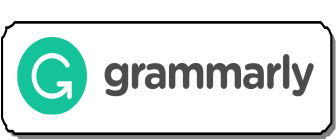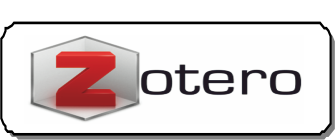Relevansi Pendidikan Akhlak di Masa Modern Perspektif Bediuzzaman Said Nursi
Abstract
Said Nursi said that in moral education is based on his understanding of the Qur'an and the inspiration of Allah SWT. The main task of moral education is to strengthen the principles possessed by humans to achieve human levels such as harmonious and balanced prophet in a positive way that gave birth to a noble attitude with morality karimah. There are 9 principles relating to morals contained from some books by Said Nursi, namely strengthening the faith, clinging to the Qur'an, the importance of understanding the essence of human creation, the importance of understanding the universe, the importance of understanding the 'al-Husna asthma, the importance of knowing Signs of doomsday, the importance of believing the end of the world, imitating the prophet Muhammad, and inculcating sincere, piety and alms. And from some of the principles / morals above, the most fundamental thing in strengthening his understanding is his interpretation of God, man, and the universe. First morality to God is related to the principle of strengthening the faith. Said Nursi believes that the ultimate faith in living a life. The faith in question is faith that is sufficient in the faith. Second is morality to man, is a manifestation of understanding the real creation of man. Humans have a tendency to goodness and always to the right path. And thirdly, the morals to the universe, Said Nursi says that the universe with all its elements, from the largest to the smallest, from inanimate to living things, are all created with a dose corresponding to their respective portions. Perspective Said Nursi about moral education, of course, very relevant to the context of character education as proclaimed by the government at this time. Theoretically Said Nursi's thought is based on al-Qur'an as-Sunnah and in practice can provide spiritual values through reason and morals so it is expected to change society to be morally in everyday life, both at school and at home.
References
Abudin Nata, Pemikiran Para Tokoh Pendidikan Islam (Seri Kajian Filsafat Pendidikan Islam, Jakarta: Raja Grafindo Persada, 2001.
Adem Tatli, Bediuzzaman Education Method (The Paper Presented in The Second International Symposium on Bediuzzaman Said Nursi: The Recontruction of Islamic Thought In The TwentiethCentury and Bediuzzaman Said Nursi, 27-29 September 2000),Istambul: Sozler Publication, 1992.
Agus Setiawan, Prinsip Pendidikan Karakter dalam Islam (Studi Komparasi Pemikiran al-Ghazali dan Burhanuddin al-Zarnuji), DINAMIKA ILMU, 14 (1), 2014.
Ahmad Amin, Kitab Akhlak, terjemah Hasan Aminuddin, Surabaya: Quntum Media, 2012.
Ahmad D Marimba, Filsafat Pendidikan Islam, Jakarta: Bumi Aksara, 2001.
Al-Brayary, Pengenalan Sejarah Al-Qur’an, Jakarta: Raja Grafindo Persada, 1988.
Al-Imam Malik bin Anas, Al-Muwatta’, Juz. 2,Beirut: Dar al-Fikr, 1989.
Al-Syaibani OMA, Filsafat Pendidikan Islam, Terjemahan Hasan Langgulung, Jakarta: Bulan Bintang, 1979.
Arifin, Filsafat Pendidikan Islam,Jakarta: Bina Aksara,1987.
Ayzumardi Azra, Pendidikan Islam, (Tradisi dan Modernisasi Menuju Millenium baru), Ciputat: Logos, 2000.
Bediuzzaman Said Nursi, Bediuzzaman Said Nursi (Tariche-i Hayati), Istanbul: Sozler Yayinevi, 1999.
____________________,Dari Balik Lembaran Suci,Terjemah Sugeng Hariyanto, Jakarta: Siraja, 2003.
____________________,Dari Cerminan Ke Esaan Allah, Terjemah Sugeng Hariyanto & Fathor Rasyid, Jakarta: Siraja, 2003.
____________________,Episode Mistis Kehidupan Rasulullah, Terjemah Sugeng Hariyanto, Jakarta: Prenada Media, 2003.
____________________, Mengokohkan Aqidah Menggairahkan Ibadah.Penerjemah: Muhammad Misbah, Jakarta: Robbani Press, 2004
____________________, Misteri Keesaan Allah, terjemah Dewi Sukarti, Jakarta: Erlangga, 2010.
____________________, Risalah An-Nur; Said Nursi; Pemikir dan Sufi Besar Abad 20 (Menjawab yang Tak Terjawab, Menjelaskan yangTak Terjelaskan, Jakarta: Murai Kencana, 2003.
____________________, Risalah An-Nur; Said Nursi; Pemikir dan Sufi Besar Abad 20 (Menikmati Takdir Langit: Lama’at), Jakarta: Murai Kencana, 2003.
____________________, Risalah An-Nur; Said Nursi; Pemikir dan Sufi Besar Abad 20 (Sinar Yang Menangkap Sang Cahaya; Epitomes OF Light), Jakarta: Murai Kencana, 2003.
Departemen Agama RI, SyaamilAl-Qur‘an Terjemah Per-Kata, Bandung: Sigma, 2007.
Dja’far Amir, Ilmu Mantiq, Solo: Ramadhani, 1980.
Erik J. Zurcher, Sejarah Modern Turki, terj. Karsidi Diningrat R. Jakarta: Gramedia, 2003.
F. Aunur Rahim, dkk, Pemikiran dan Peradaban Islam, Yogyakarta, UUI Press bekerjasama dengan Lembaga Pembinaan dan Pengembangan Agama Islam (LPPAI), 1998.
Hajriana, Model Pembelajaran Berbasis Pendidikan Karakter pada Pembelajaran PAI Bidang Aqidah dan Akhlak di SMP, EDUCASIA, Vol. 1 No. 2, 2016
Harun Nasution, Islam Ditinjau dari Berbagai Aspeknya, Jakarta: UI Press, 1985.
Harun Nasution, Pembaharuan dalam Islam, Jakarta: Bulan Bintang, 1996.
Hussein Bahreisj, Himpunan Pengetahuan Islam (450 Masalah Agama Islam), (Surabaya: Al Ikhlas, 1980.
Ibn Miskawaih, Tahzib al-Akhlaq, Hasan Tamirn (Ed), (Bairut: Mansyurat Dar Maktabatal-Hayat,1997.
Ibrahim Abu Rabi’ & Jane I Smith (eds.), Special Issue Said Nursi and the Turkis Experience, The Muslim World, Vol. LXXXIV, No. 3-4. July-Oktober, 1999, h. 199.
Ibrahim M. Abu-Rabi’ (ed.), Islam at the Crossroads, Albany: State University of New York, 2003.
Ihsan Kasim Salih, Said Nursi Pemikir & Sufi Besar Abad 20, terj. Nabilah Lubis Jakarta: Raja Grafindo Persada, 2003.
Ilham Yildiz, The Search in The Traditional Period (1924-1950) for a Religion Education Model (The Paper Presented at the fifth international sysmposium on Bediuzzaman Said Nursi 24-26 September 2000), Istanbul: Sozler Publication, 2002.
Inu Kencana Syafiie, Logika,Elika,dan Estetika Islam,Jakarta:Pertja, 1998.
Ira M. Lapidus, Sejarah Sosial Ummat Islam, terj. Ghufron A. Mas’adi, Jakarta: RajaGrafindo Persada, 1999.
Ismail Raji Al-Faruqi, Tauhid, Bandung: Pustaka, 1982.
Khursyid Ahmad, Prinsip-Prinsip Pendidikan Islam, Terj. AS Robith,Surabaya: Pustaka Progresif,1992.
M. Ali Hasan, Studi Islam: Al-Qur’an dan As-Sunnah, Jakarta: Raja Grafindo Persada,2000.
Margono, Metodologi Penelitian Pendidikan, Jakarta: Rineka Cipta, 1997.
MohWan Daud, Filsafah dan Praktik Pendidikan Islam Syed M.Naquib Al-Atlas, Bandung: Mizan,1999.
Mohammad Zaidin, Bediuzzaman Said Nursi: Sejarah Perjuangan dan Pemikiran, Malaysia, Selangor Darul Ehsan: Malita Jaya Publisher, 2001.
Muhammad Zein, Methodologi Pengajaranqjaran Agama, Yogyakarta: AKGroup dan IndiaBuana,1995.
Mukti Ali, Metodologi Penelitian Agama; sebuah Pengantar, Taudik Abdullah dan M. Rusli Karim, Yogyakarta: Tiara Wacana, 1989.
Musthafa M. Thahhan, Model Kepemimpinan dalam Amal Islam, terj. Musthalah Maufur, Jakarta: Robbani Press, 1997.
Nasaruddin Latif, Keluarga Muslim, Jakarta: BP 4Pusat,1997.
Ngalim Purwanto, Ilmu Pendidika, Teoritis dan Praktis, Bandung: Remaja Karya,1985.
Nurul Hidayati Rofiah, Desain Pengembangan Pembelajaran Akidah Akhlak Di Perguruan Tinggi, FENOMENA, 8 (1), 2016.
Nurul Zuriah, Pendidkan Moraldan Budi Pekerti Dalam Perspektif Perubahan, Jakarta: Bumi Aksara, 2007.
Omar Muhammad Al-Thoumy Al-Syaibany, Falsafah Pendidikan Islam, Jakarta: Bulan Bintang, 2009.
Said Nursi, Iman Kunci Kesempurnaan, terj. Muhammad Mishbah, Jakarta: Robbani Press, 2004.
_________, Mengokohkan aqidah Menggairahkan Ibadah., terj. Ibtidain Hamzah khan, Jakarta: Robbani Press, 2004 .
_________, Signs of Miraculousness, trans. Sukran Vahide, Istanbul: Sozler Publications, 2004.
_________, Sinar Yang Mengungkap Sang Cahaya, terj. Sugeng Hariyanto dkk. Jakarta: Grafindo Persada, 2003.
_________, The Flashes, trans. Sukran Vahide, Istanbul: Sozler Nesriyat, 2000.
Sakir Gozutok, The Risale-i Nur in The Context of Educational Principles and Methods (The Paper Presented In The Fifth International Symposium On Bediuzzaman Said Nursi), Istanbul: Sozler Publication, 2002.
Salih Ihsan Kasim, Said Nursi Pemikir dan Sufi Besar Abad 20 (Membebaskan Agama dariDogmatisme dan Sekularisme), Jakarta: Murai Kencana, 2003.
Soegarda Poerbakawatja, Ensiklopedia Pendidikan, Jakarta: Gunung Agung, 1981.
Sukran Vahide, Bediuzzaman Said Nursi,Istanbul: Sozler Nesriyat, 2000.
Sumadi Suryabrata, Metodologi Penelitian, Jakarta: Rajawali Press, 1997.
Suwito, "Konsep Pendidikan Akhlak Menurut Ibn Miskawaih". Disertasi Doktor pada Program Pascasarjana (Pps) Institut Agama Islam Negeri (IAIN) Jakarta Syarif Hidayatullah, 1995.
Syafiq A. Mughni, Sejarah Kebudayaan Islam di Turki, Jakarta: Logos, 1997.
Syaikh Muhammad Shaleh al-‘Utsaimin, Aqidah Ahulus sunah wal Jama’ah, Jakarta: Yayasan al-Sofwa, 1995.
Syed Muhammad Naquib Al-Attas, Islam dan Filsafat Sains diterjemahkan oleh Saiful Muzani, Bandung Mizan, 1995.
Thomas Michel S.J., Said Nursi’s Views on Muslim-Christian Understanding Istanbul: Yenibosna, 2005.
Vahide Sukran, Bediuzzaman Said Nursi, Istanbul: Sozler Publication, 1992.
Winarso Surakhmad, Penelitian Ilmiah, Bandung: Tarsito, 1994.
Zakiah Daradjat,Ilmu Pendidikan Islam, Jakarta: Bumi Aksara, 1992.
Please find the rights and licenses in SYAMIL Jurnal Pendidikan Agama Islam (Journal of Islamic Education). By submitting the article/manuscript of the article, the author(s) agree with this policy. No specific document sign-off is required.
1. License
The non-commercial use of the article will be governed by the Creative Commons Attribution license as currently displayed on Creative Commons Attribution-ShareAlike 4.0 International License.
2. Author(s)' Warranties
The author warrants that the article is original, written by stated author(s), has not been published before, contains no unlawful statements, does not infringe the rights of others, is subject to copyright that is vested exclusively in the author and free of any third party rights, and that any necessary written permissions to quote from other sources have been obtained by the author(s).
3. User/Public Rights
SYAMIL spirit is to disseminate articles published are as free as possible. Under the Creative Commons license, SYAMIL permits users to copy, distribute, display, and perform the work for non-commercial purposes only. Users will also need to attribute authors and Register on distributing works in the journal and other media of publications. Unless otherwise stated, the authors are public entities as soon as their articles got published.
4. Rights of Authors
Authors retain all their rights to the published works, such as (but not limited to) the following rights;
Copyright and other proprietary rights relating to the article, such as patent rights,
The right to use the substance of the article in own future works, including lectures and books,
The right to reproduce the article for own purposes,
The right to self-archive the article (please read out deposit policy),
The right to enter into separate, additional contractual arrangements for the non-exclusive distribution of the article's published version (e.g., post it to an institutional repository or publish it in a book), with an acknowledgment of its initial publication in this journal (SYAMIL Jurnal Pendidikan Agama Islam (Journal of Islamic Education)).
5. Co-Authorship
If the article was jointly prepared by more than one author, any authors submitting the manuscript warrants that he/she has been authorized by all co-authors to be agreed on this copyright and license notice (agreement) on their behalf, and agrees to inform his/her co-authors of the terms of this policy. SYAMIL will not be held liable for anything that may arise due to the author(s) internal dispute. SYAMIL will only communicate with the corresponding author.
6. Royalties
Being an open accessed journal and disseminating articles for free under the Creative Commons license term mentioned, author(s) aware that SYAMIL entitles the author(s) to no royalties or other fees.
7. Miscellaneous
SYAMIL will publish the article (or have it published) in the journal if the article’s editorial process is successfully completed. SYAMIL editors may modify the article to a style of punctuation, spelling, capitalization, referencing and usage that deems appropriate. The author acknowledges that the article may be published so that it will be publicly accessible and such access will be free of charge for the readers as mentioned in point 3.











